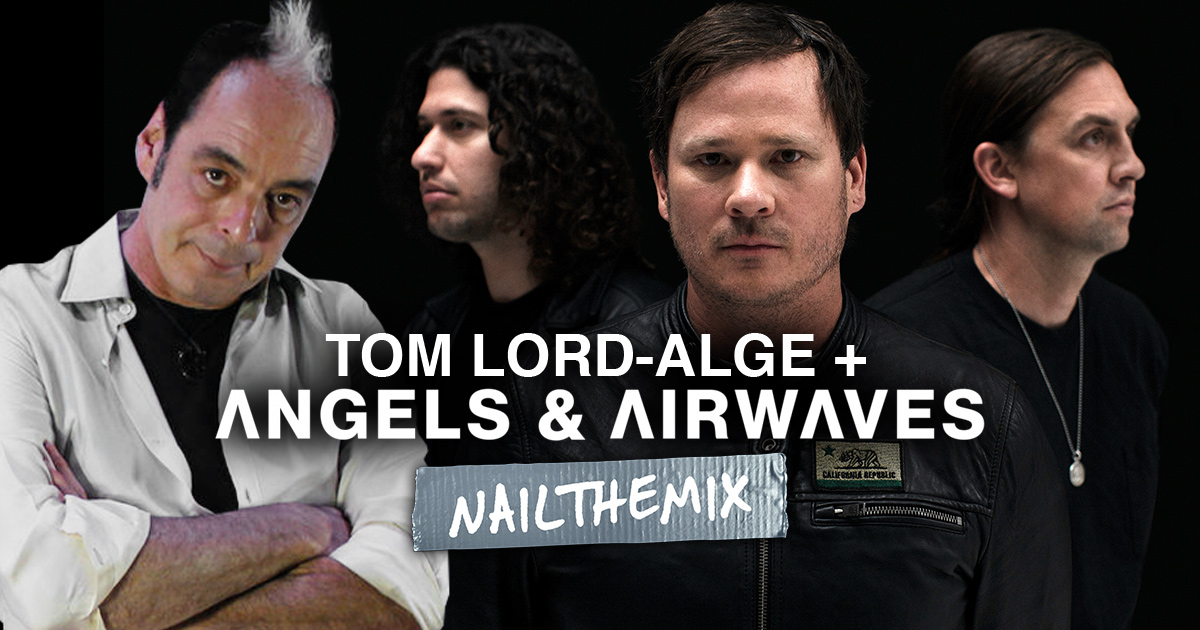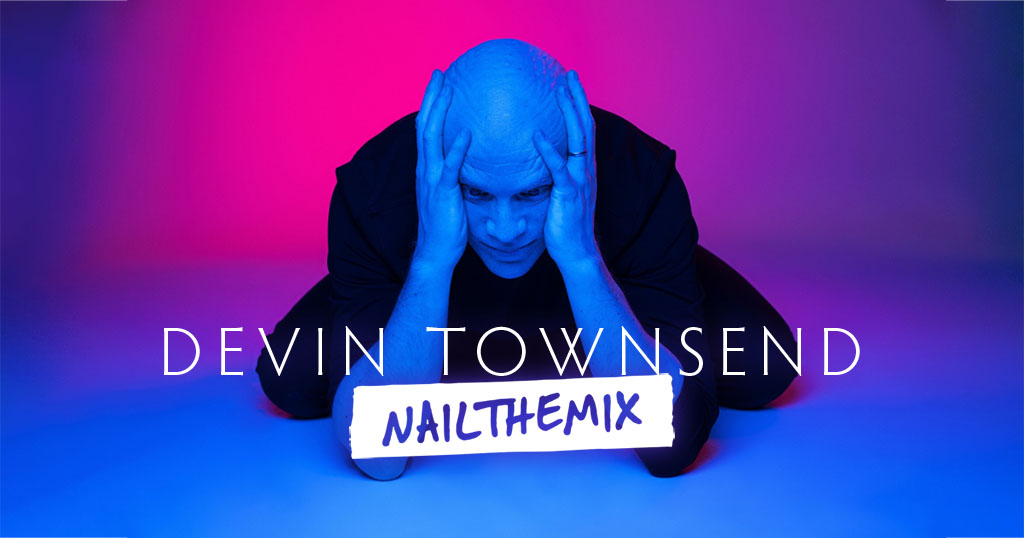
Mixing Slamming BlessTheFall Drums: Tyler Smyth’s Bus Processing Chain
Nail The Mix Staff
Getting drums to sound huge in a fast, aggressive track is a constant battle. You want body and punch, but you also need clarity and speed, especially with a relentless, punk-style beat like the one in this BlessTheFall song. How do you make a drum kit slam and feel glued together without turning it into a muddy mess?
Producer Tyler Smyth (I Prevail, Falling In Reverse) walked us through his exact approach to the Blessthefall drum bus, showing how he balances extreme processing with smart, surgical moves to get the best of both worlds. Let’s break down his chain, from heavy-handed compression to clever sidechaining.
Building the Foundation with Extreme Bus Compression
Right off the bat, Tyler’s goal is to make the whole kit slam. This isn’t about subtle, transparent dynamics control; it’s about creating a cohesive, powerful, and slightly over-the-top character. The key is heavy drum bus compression.
Choosing the Right Tool for Aggressive Glue
For this task, Tyler reaches for an 1176-style compressor, a classic choice for adding punch and attitude. He specifically goes for the Waves CLA-76. Interestingly, instead of picking one of the more colorful models like the “Blue Stripe,” he opts for the cleaner “LN” version. This model focuses on the snappy compression behavior of the hardware without imparting as much of its specific harmonic saturation, giving him a bit more control over the tone later on.
Dialing in the Smash
Tyler’s approach here is “super extreme.” He pushes the compressor hard, getting up to 10dB of gain reduction pretty consistently. That’s a lot of squish, but it’s intentional. By setting a slower attack, he allows the initial crack of the snare and the thump of the kick to slip through before the compressor clamps down. This preserves the impact while the fast release brings up all the room sound and shell resonance, creating a “dramatic glue” that makes the individual drums sound like one massive unit. This heavy lifting creates a ton of warmth and body, which is exactly what he’s after at this stage.
Carving Out Clarity in a Fast Mix
That extreme compression adds a ton of low-mid energy—what many producers would call “mud.” In a fast song where the kick and snare are firing off constantly, this can quickly become a jumbled mess. To get both body and speed, you have to create clarity.
Surgical Sidechaining for Kick and Snare
Instead of just EQing out all that newly-added body, Tyler uses a nifty trick: snare-to-kick sidechaining. He uses a plugin called Wavesfactory Trackspacer, a dynamic EQ that ducks frequencies from one source to make room for another.
Here’s the setup:
- Place Trackspacer on the kick drum track.
- Set up a sidechain input from the main snare track.
- Define the frequency range to be ducked. Tyler targets the low-mids, setting the range from around 100Hz to 400Hz.
- Dial in a high ratio so the ducking is immediate and effective.
Now, every time the snare hits, Trackspacer carves a small pocket out of the kick drum’s low-mids. It’s a subtle, almost imperceptible ducking that happens only when it’s needed. This ensures the snare’s impact is never masked by the kick, bringing tons of clarity to the groove without making the kick drum sound thin on its own.
Making Individual Elements Punch Through
With the bus processing creating the overall vibe, Tyler zooms in on a few elements to make sure they have the impact they need.
Bringing the Snare to Life with Low-Mids
One of the most surprising and effective moves Tyler makes is on the snare itself. The raw snare sample is a bit thin, and rather than just reaching for the volume fader or a transient shaper, he uses EQ.
By adding a healthy boost to the low-mid frequencies, he demonstrates a night-and-day difference. The snare goes from thin and pokey to full, fat, and powerful. It’s a powerful reminder that sometimes the “body” of a drum isn’t about volume, but about having the right frequency content to command its space in the mix. These are the kinds of nuanced techniques that separate good and great drum sounds, and a core part of mixing punchy metal drums.
Getting Extra “Room” with Clipping
To give the snare even more perceived size, Tyler uses another cool trick. He wants more of that room sound and sustain but doesn’t want to just crank up the room mic fader. Instead, he uses a clipper plugin (like StandardCLIP) on the snare track itself. A touch of clipping brings out the sustain and ambient character of the drum, essentially adding more “room” sound directly to the snare. This allows him to get that extra body while keeping the dedicated room mics at a more controlled level in the mix.
Creating a Massive Snare Accent
To give certain snare hits massive emphasis, Tyler builds a dedicated effects track. This isn’t for every hit, but for those moments that need to feel huge.
He starts by copying his main snare processing to the accent track to keep the core tone consistent. Then, he adds a massive reverb using a plugin like Waves R-Verb. He chooses a “Hall” preset to get a big, washy sound. The crucial final step is to EQ the reverb return itself. He carves out a bit of the low end to prevent boominess and filters out some harsh high-frequency “metallicy” sound, making the massive reverb sit behind the main drums instead of fighting with them. The result is an epic, “back of a garage” explosion that adds insane impact without cluttering the mix.
See It All in Action
Tyler Smyth’s approach shows that crafting killer drum tones is about bold moves balanced with smart, surgical problem-solving. This kind of expert workflow is exactly what our in-depth courses are designed to teach. It’s the combination of extreme bus compression, clever sidechaining, and targeted tonal shaping that brings these BlessTheFall drums to life.
These are the kinds of real-world techniques you can apply to your own mixes right now. But seeing how these individual pieces fit into the puzzle of a full production—with guitars, bass, and vocals—is where the real magic happens. On Nail The Mix, you get to be a fly on the wall for exactly that.
Want to learn more about how the pros mix modern records from start to finish? Check out our guide on how to mix modern metal like a pro.
Blessthefall on Nail The Mix
Tyler Smyth mixes "Cutthroat"
Get the Session
To see how Tyler Smyth takes these drum tones and builds the entire mix around them, check out his full, unabridged Nail The Mix session for this BlessTheFall track. You’ll get the raw multitracks and watch him mix the entire song from scratch, explaining every single plugin, fader move, and decision along the way. Watch now!
Get a new set of multi-tracks every month from a world-class artist, a livestream with the producer who mixed it, 100+ tutorials, our exclusive plugins and more
Get Started for $1




